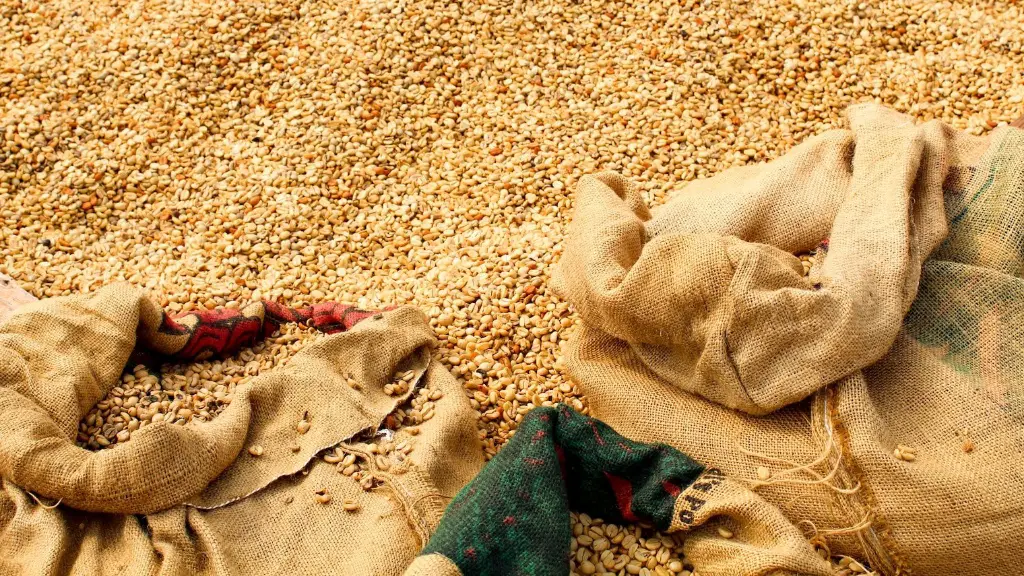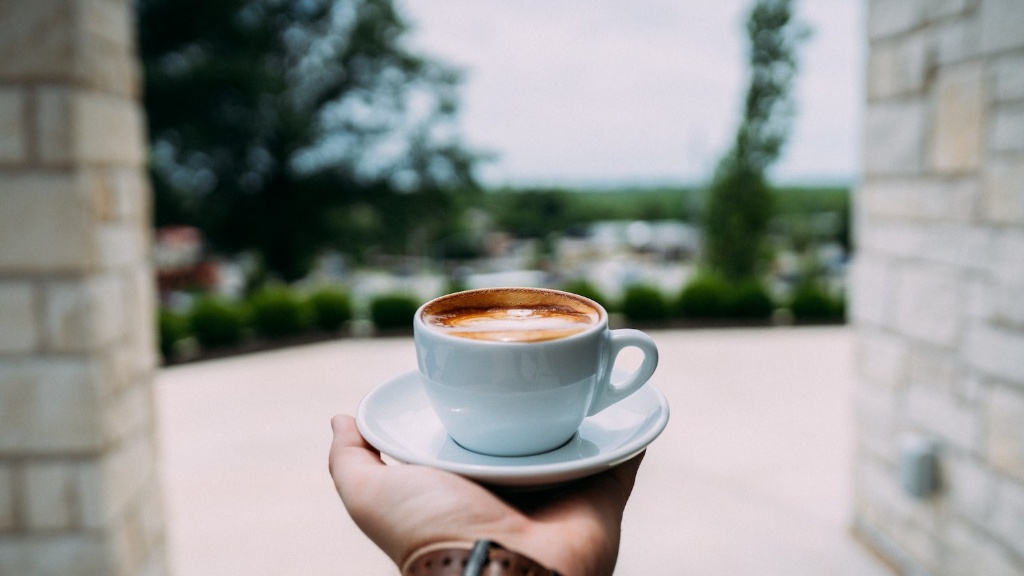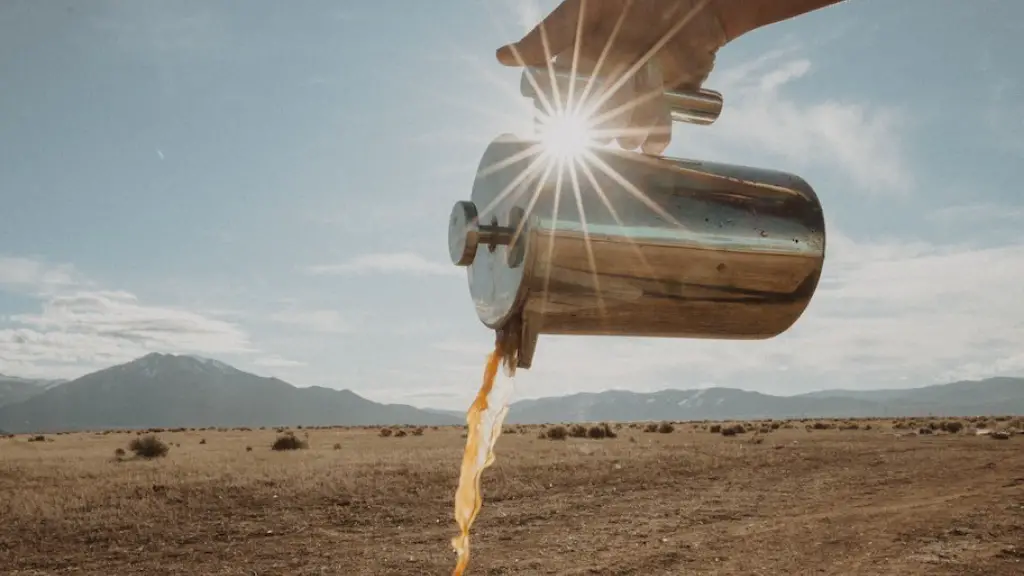If you love coffee, then you probably already know that freshly ground coffee beans make the best cup of coffee. But what if you don’t have a coffee grinder? Can you use a food processor to grind coffee beans?
The answer is yes, you can use a food processor to grind coffee beans. However, there are a few things to keep in mind. First, you’ll need to use a coarse grind setting. If you use a fine grind setting, the coffee beans will quickly turn into dust and your coffee will be very bitter. Second, it’s important to pulse the food processor rather than run it continuously. Otherwise, the coffee beans will heat up and lose their flavor.
If you follow these tips, you’ll be able to enjoy a delicious cup of coffee made with freshly ground coffee beans, even if you don’t have a coffee grinder.
You certainly can use a food processor to grind coffee beans, but there are a few things you should keep in mind. First, coffee beans are harder than many other food items, so you’ll want to make sure your food processor is up to the task. Second, you’ll want to be careful not to overdo it and end up with grounds that are too fine. Finally, remember that you’ll need to clean your food processor thoroughly afterwards to remove any coffee oils that have been released during grinding.
Is it better to grind coffee beans in a blender or food processor?
Pulsing your coffee in the food processor can help you get a more even grind than using a blender. However, if you’re a big coffee lover, you might want to invest in a grinder.
It is possible to grind coffee beans in a processor or any food processing apparatus that comes with a blade. If you practice a bit, you can use it to get a medium-fine grind with some consistency. Let the processor go to work on your beans for a few minutes and you’ll get a medium-fine grind.
What is the best way to grind coffee beans without a grinder
A food processor can be a quick and easy way to grind coffee beans. Simply pour the desired amount of coffee into the food processor and using a pulse setting, grind the beans in bursts of 3-5 seconds. Repeat the process until the desired consistency is achieved or a total of 30 seconds is reached. Tilting the food processor can ensure that the grind is roughly the same size.
If you’re at a vacation rental and you need to grind some coffee up in a pinch, more likely than not you can find a workable coffee grinder there. If not, feel free to bring your own!
Is it cheaper to grind your own coffee?
If you’re looking to save money on coffee, grinding your own beans at home is not the way to go. In most cases, whole coffee beans are going to be more expensive than ground coffee. So think twice before you grind your own beans at home in an effort to save a few bucks.
When you grind your own meat, you have complete control over the cut, fat content, and texture. This allows you to create the perfect grind for beef, pork, poultry, and even fish and seafood. Store-bought ground meat can vary widely in quality, so grinding your own meat ensures that you get the best possible product.
What can I substitute for a coffee grinder?
There are different ways that you can grind your coffee beans. The most common ways are with a mortar and pestle, a blender, a rolling pin, a hammer, or a knife. Each method will produce a different grind, so it is important to experiment to find the one that suits your taste.
While both mixers and food processors can be helpful kitchen tools, they each have their own unique functions. Mixers are great for whipping, mixing, and chop, while food processors can help you mince and puree ingredients. Depending on what you’re looking to make, either one of these appliances can come in handy.
What should you not put in a food processor
A food processor can be a great tool in the kitchen, but there are certain things you should never put in it. Filling it with liquid can cause it to overflow and make a mess. Hot or boiling foods can splatter and cause burns. Meats that are too tough can damage the blades. Gelatin can cause the food processor to gum up. Freshly baked nuts can be difficult to chop evenly. Fruit and vegetable peels can clog the blades. Bone can damage the food processor or dull the blades.
A mortar and pestle is a great way to get a consistent medium-fine to fine grind on your coffee beans. It will take a little time and elbow grease, but you should get excellent results.
If you want a more consistent grind, you can use a food processor to pulse the beans to your desired texture. For more consistent results, try blitzing a scant 1/2 cup of whole beans at a time.
Can I just grind coffee beans in a blender?
If you’re looking to grind your coffee beans in a blender, there are a few things you should keep in mind. First, only grind a small amount of beans at a time. 1/4 cup is a good starting point. Second, pulse the beans on medium speed to break them down to your preferred grind. Keep in mind that using a blender will generally create a coarser grind, which is great for brewing with a drip coffee maker, French press, or cold-brew coffee maker.
There are a few reasons why manual coffee grinders are thought to produce better tasting coffee than automatic grinders. First, manual grinders don’t heat up the coffee beans during grinding, which is thought to preserve the flavor of the beans. Second, most automatic grinders grind at high speeds, and the friction from grinding can slightly increase the coffee’s temperature for a short time. This could potentially affect the flavor of the coffee.
Can a Kitchenaid food processor grind coffee
If you’re looking to grind coffee beans, it’s best to invest in a coffee grinder specifically designed for that task. Food processors simply aren’t up to the task, as their motors aren’t designed to handle hard ingredients and their blades can’t create consistently sized grounds. You’ll end up with a subpar cup of coffee if you try to use a food processor, so it’s not worth the hassle. Stick to a coffee grinder and you’ll be glad you did.
The third rule is to use a burr grinder and not a blade grinder or a blender. Blade grinders just chop up the beans into random pieces, resulting in coffee that is too course or too fine. This results in an uneven extraction and a less than optimal cup of coffee. Burr grinders, on the other hand, crush the beans into uniform pieces that are all the same size. This results in a more consistent cup of coffee.
Can you grind coffee beans in a food processor for cold brew?
Making cold brew with fresh, coarsely ground coffee is my preferred method. I grind up my coffee beans in my food processor, which gives the cold brew a better flavor. It also makes it easier for you to drain out the coffee.
Coffee is best stored in an airtight container at room temperature away from heat, light, and moisture. For maximum freshness, consume within 1-2 weeks.
Is it worth getting a coffee grinder
A good coffee grinder is an important tool for making great coffee. It will help you to grind your coffee beans to the right coarseness, which will allow you to extract more flavor from your coffee. You’ll be able to control the strength of your coffee, and you’ll be able to make coffee that tastes better than what you can get from your local coffee shop.
Coffee beans should be stored in an opaque, airtight container and kept in a dark, cool location, away from the stove or other heat sources. Refrigerating or freezing the beans can expose them to dampness and smells from other foods, so it’s best to use them within a few weeks.
Warp Up
A food processor can be used to grind coffee beans, but it is not the ideal tool for this task. Coffee beans should be ground with a coffee grinder to achieve the best results.
There is no definitive answer to this question as it depends on the type of food processor you have. Some food processors come with a coffee grinder attachment that can be used to grind coffee beans, while others do not. If your food processor does not have a coffee grinder attachment, you may be able to use the blades to chop the beans into a finer powder, but this will not produce a consistent grind. It is best to consult your food processor’s manual or manufacturer to see if grinding coffee beans is an approved use for your particular model.





